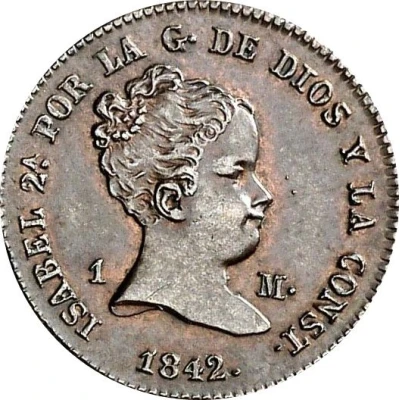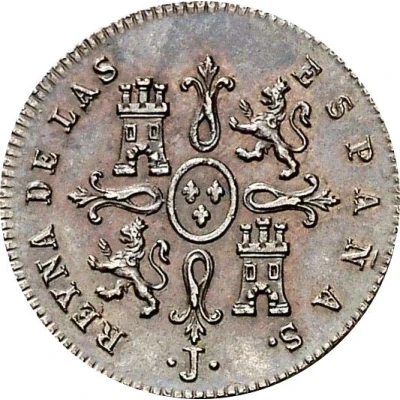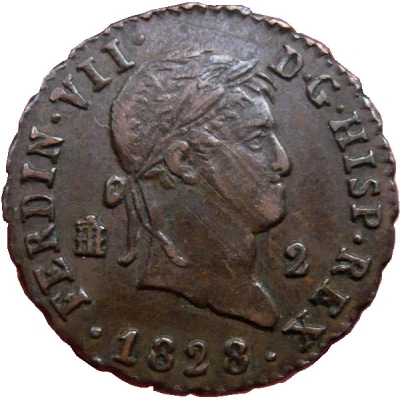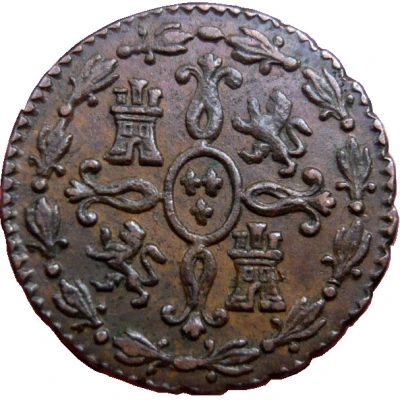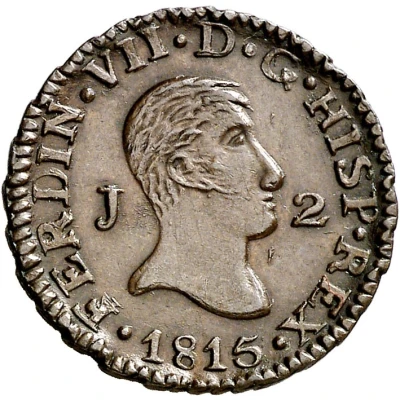
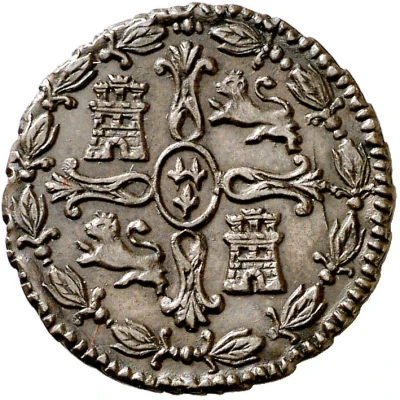

© Aureo & Calicó S.L., subastas numismáticas
2 Maravedis - Ferdinand VII Jubia mint; 1st portrait
| Copper | 3 g | 21 mm |
| Issuer | Spain |
|---|---|
| King | Ferdinand VII (1808-1833) |
| Type | Standard circulation coin |
| Years | 1812-1817 |
| Value | 2 Maravedis (1⁄17) |
| Currency | Real de vellon (1808-1848) |
| Composition | Copper |
| Weight | 3 g |
| Diameter | 21 mm |
| Thickness | 1 mm |
| Shape | Round |
| Technique | Milled |
| Orientation | Medal alignment ↑↑ |
| Demonetized | Yes |
| Updated | 2024-10-07 |
| Numista | N#104075 |
|---|---|
| Rarity index | 87% |
Reverse
Cross of Don Pelayo with castles and rampant lions representing the Kingdoms of Castile and Leon, three fleurs-de-lis in a central oval representing the Bourbons and perimeter wreath.
Engraver: Félix Sagau Dalmau de Galcerán
Comment
Due to the Napoleonic war, Jubia became a mint in 1811, because the mint in charge of making copper coins, the Real Ingenio de Segovia, was in French hands and minted coins in the name of José Bonaparte, appointed by Napoleon.In this way, the Jubia mint, at free territory from the French, would issue currency in the name of the legitimate king, Fernando VII.
Interesting fact
One interesting fact about the 2 Maravedis - Ferdinand VII (Jubia mint; 1st portrait) 1812-1817 coin from Spain is that it was minted during a time of political turmoil in the country. The Jubia mint, where the coin was produced, was established in 1812, and it was the first mint to produce coins with the portrait of Ferdinand VII, who had recently been restored to the throne after a period of French occupation. The coin's design features a portrait of Ferdinand VII on one side and the Spanish coat of arms on the other, symbolizing the country's return to independence and the re-establishment of its monarchy. Despite its historical significance, the coin is relatively rare and highly sought after by collectors today.
